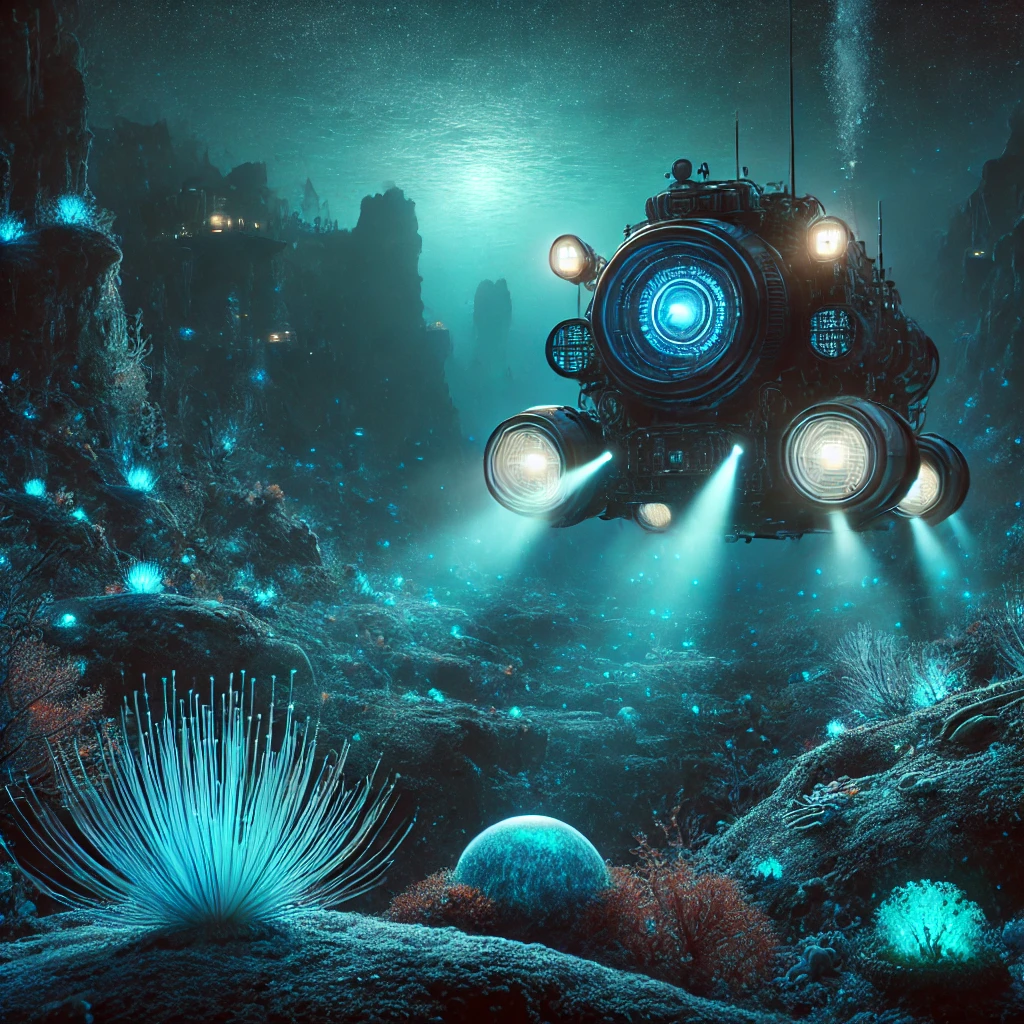Introduction
The deep ocean is one of the least explored and most mysterious regions on Earth. Despite covering more than 70% of the planet’s surface, we have mapped only about 5% of the ocean floor. Beneath the waves lies a hidden world of bizarre creatures, unknown ecosystems, and extreme environments that challenge our understanding of life itself.
In this blog, we will explore the wonders of the deep ocean, uncovering its fascinating creatures, the challenges of deep-sea exploration, and the groundbreaking technologies used to study this alien-like world.
The Depths of the Ocean: How Deep Does It Go?
The ocean is divided into different zones based on depth:
- Sunlight Zone (Epipelagic Zone, 0-200m): The uppermost layer where sunlight penetrates, supporting most marine life.
- Twilight Zone (Mesopelagic Zone, 200-1000m): Limited sunlight, home to bioluminescent organisms.
- Midnight Zone (Bathypelagic Zone, 1000-4000m): No sunlight, immense pressure, and bizarre deep-sea creatures.
- Abyssal Zone (4000-6000m): Extreme cold and pressure, with unique adaptations for survival.
- Hadal Zone (6000-11000m): The deepest part of the ocean, including trenches like the Mariana Trench.
Mysterious Deep-Sea Creatures
The deep sea is home to some of the most unusual and alien-like creatures on Earth. Here are a few fascinating examples:
- Anglerfish
- A terrifying predator with a bioluminescent lure on its head to attract prey in the pitch-dark depths.
- Giant Squid
- Once a legend, this massive creature can grow up to 43 feet and is rarely seen by humans.
- Dumbo Octopus
- Named for its ear-like fins, this deep-sea octopus uses them to “fly” through the water.
- Vampire Squid
- A small, red-colored squid that uses light-producing organs to evade predators.
- Goblin Shark
- A deep-sea shark with a bizarre, elongated snout and protruding jaws.
Challenges of Deep-Sea Exploration
Exploring the deep ocean is no easy task. Scientists face several challenges, including:
- Extreme Pressure: At 10,000 meters, pressure is 1,000 times greater than at sea level.
- Total Darkness: No sunlight reaches below 1000 meters, requiring artificial lighting.
- Cold Temperatures: The deep ocean remains near freezing.
- Technical Limitations: Specialized submersibles and remotely operated vehicles (ROVs) are required.
Technologies for Deep-Sea Exploration
Recent advancements have allowed us to explore the deep sea more effectively:
- ROVs (Remotely Operated Vehicles): Equipped with cameras and robotic arms for deep-sea research.
- Autonomous Underwater Vehicles (AUVs): Unmanned drones that navigate deep waters independently.
- Deep-Sea Submersibles: Manned vessels like Alvin and Deepsea Challenger, which have reached extreme depths.
- Sonar Mapping: Used to create high-resolution maps of the ocean floor.
The Future of Deep-Sea Exploration
Scientists believe that studying the deep ocean could lead to groundbreaking discoveries, including:
- New Medicines: Deep-sea organisms may provide compounds for medical treatments.
- Climate Insights: The deep ocean plays a crucial role in regulating Earth’s climate.
- Alien Life Clues: Studying extreme deep-sea environments may help in the search for extraterrestrial life.
Conclusion
The deep ocean remains one of Earth’s last great frontiers. As technology advances, we are gradually uncovering its secrets, revealing incredible life forms and ecosystems that challenge our understanding of nature. The more we explore, the more we realize how little we truly know about our own planet.

